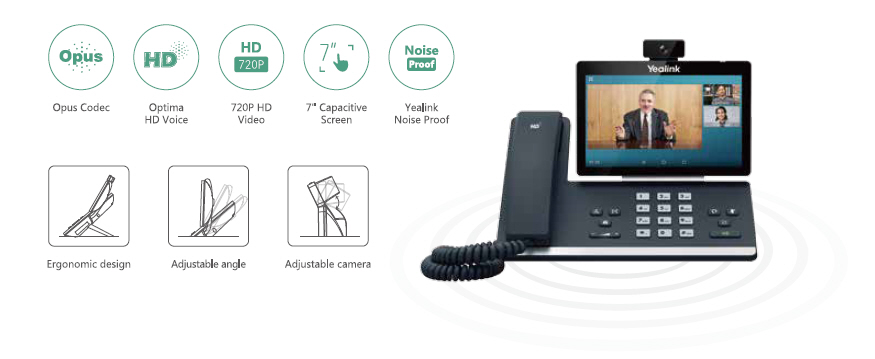Introduction
In the ever-evolving landscape of telecommunications, the demand for efficient, cost-effective communication solutions is paramount. One such innovative solution that has gained significant traction in recent years is SIP Trunking. It serves as a bridge between traditional telephony and modern Voice over Internet Protocol (VoIP) phone systems. This article delves deep into the intricacies of understanding SIP trunking and its impact on VoIP phone systems, while also exploring its advantages, challenges, and future trends.
What is SIP Trunking?
SIP (Session Initiation Protocol) trunking is a service that allows businesses to connect their private branch exchange (PBX) to the internet directly. Instead of relying on traditional phone lines, SIP trunking uses broadband connections to provide voice services alongside data transmission. This technology enables organizations to make and receive calls over the internet seamlessly.
How Does SIP Trunking Work?
At its core, SIP trunking transmits voice signals as packets over IP networks. When a call is made, the SIP protocol initiates a session between two endpoints: the calling party and the receiving party. This process involves several steps:
Session Initiation: The caller's VoIP phone system sends a request to establish a connection. Signaling: SIP messages are exchanged to negotiate call parameters. Media Transmission: Once established, voice data packets are transmitted over the internet. Session Termination: After the conversation ends, another SIP message terminates the session.The Role of VoIP Phone Systems in SIP Trunking
VoIP https://garrettqlze029.hpage.com/post1.html phone systems are essential for utilizing SIP trunking effectively. They offer functionalities like call forwarding, voicemail-to-email, and conferencing capabilities that enhance communication efficiency within an organization.
Advantages of Using SIP Trunking with VoIP Phone Systems
Cost Savings: By eliminating traditional phone lines and leveraging existing broadband connections, businesses can significantly reduce their telecommunication costs. Scalability: As business needs change, scaling up or down becomes effortless with SIP trunking. Flexibility: Organizations can add or remove channels without physical rewiring. Improved Call Quality: Advanced codecs enable superior audio quality compared to traditional telephone lines.Understanding SIP Trunking and Its Impact on VoIP Phone Systems
Understanding how SIP trunking impacts VoIP phone systems involves recognizing both immediate benefits and long-term implications for businesses looking to streamline their communications.
Reduced Infrastructure Costs
One of the most significant impacts of integrating SIP trunking is reduced infrastructure costs. Businesses no longer need to invest heavily in hardware or maintain complex wiring systems typically associated with traditional telephony.
Enhanced Communication Features
SIP trunking allows businesses to leverage advanced features like video conferencing, instant messaging, and unified communications—all integrated within their existing VoIP phone systems.
Global Reach
With SIP trunking, companies can easily extend their communication capabilities internationally without incurring exorbitant fees associated with traditional long-distance calls.
Disaster Recovery Capabilities
Implementing redundancy through cloud-based services ensures that even in case of local outages or issues, communication remains uninterrupted.
Challenges Associated with SIP Trunking
While there are numerous advantages to using SIP trunking with VoIP phone systems, there are also challenges that organizations may face:
Network Dependency: A reliable internet connection is crucial; any disruption may lead to communication breakdowns. Security Risks: With increased reliance on internet-based services comes potential exposure to cyber threats. Initial Setup Complexity: Transitioning from traditional PBX systems may require technical expertise for proper configuration.
The Future of SIP Trunking in VoIP Phone Systems
As technology continues advancing at breakneck speed, we can anticipate several trends shaping the future of SIP trunking:
Increased Adoption of Cloud Solutions: More businesses will migrate towards cloud-based telecommunications solutions for flexibility and scalability. Artificial Intelligence Integration: AI enhancements will offer smarter routing options based on real-time data analysis. Emphasis on Security Measures: As cyber threats evolve, enhanced encryption techniques will become standard practice in protecting communication channels.FAQs About Understanding SIP Trunking
1. What is the main benefit of using SIP trunks?
The primary benefit lies in cost savings by reducing infrastructure expenses associated with traditional telephone lines while enhancing flexibility and scalability.
2. Can I use my existing PBX system with SIP trunks?
Yes! Many modern PBX systems are compatible with SIP trunks; however, some legacy systems may require upgrades or additional configuration.

3. How do I ensure security when using SIP trunks?
Implement strong encryption protocols like SRTP (Secure Real-Time Transport Protocol) along with robust firewalls and intrusion detection systems.
4. Is there a limit on how many calls I can make using a single SIP trunk?
While technically there’s no hard limit imposed by the technology itself; practical limitations depend on your network bandwidth and service provider capabilities.
5. What happens if my internet connection goes down?
If you lose internet connectivity during a call session initiated through your VoIP phone system utilizing a Sip-trunk service provider,the call will drop unless you have redundancy plans established such as failover lines via PSTN routes。
6.What type of businesses benefit most from implementing sip-trunks?
Any size business could potentially benefit but small-to-medium enterprises seeking cost-efficient means would see great returns particularly due lower maintenance costs compared legacy alternatives。
Conclusion
In summary,understanding sip trunkings impact on voip-phone-systems presents an opportunity not just for improved communications but also significant cost reduction overall operations。这 technology revolutionizes how we think about business interactions enabling seamless connectivity across diverse environments while providing access advanced features previously unimaginable。As we look ahead,it’ll be fascinating witness how this trend evolves alongside emerging technologies further shaping our digital landscape。